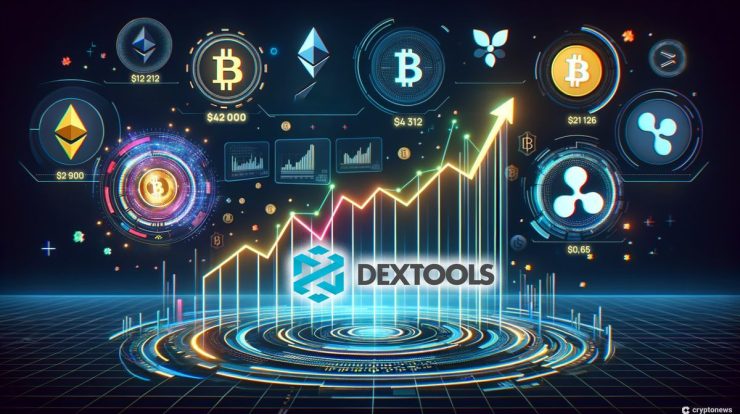
A virtual currency is a digital way to represent money that can only be used online. It is stored in software, mobile apps, or computer apps that are designed for that purpose. Virtual currencies are bought and sold through secure, dedicated networks or the Internet. They are usually not regulated and are usually given out by private individuals or groups of developers.
Virtual currencies are a subset of digital currencies. They include things like cryptocurrencies and tokens issued by private organizations. One of the best things about virtual currencies is how easy they are to use. Virtual currencies have problems in that they can be hacked, and investors don’t have many legal options because they are not regulated.
KEY TAKEAWAYS
- Virtual currencies are digital versions of money that can be traded on the internet or through online networks.
- All virtual currencies are digital currencies, but the opposite isn’t true.
- Most virtual currencies aren’t regulated because they are made by private organisations or groups of developers.
- By cutting out middlemen, virtual currencies make transactions go faster, but they can also be hacked or used in online scams.
How to Understand Virtual Money
Digital currency comes in the form of virtual currencies. They are made by private parties, like a group of developers or an organisation, and can only be used online. Unlike paper money, they don’t have a physical form. So, they are different from central bank digital currency, which is a digital copy of currency issued by the central bank (CBDC).
The European Central Bank (ECB) created the term “virtual currency” in 2012 to describe “digital money in an unregulated environment, issued and controlled by its developers, and used as a payment method among members of a specific virtual community.”
The Internal Revenue Service (IRS) in the United States says that virtual currencies are “digital representations of value that function as a unit of account, a store of value, and a medium of exchange.”
Even though both definitions are broad enough to cover a lot of different things about virtual currencies, they may not be entirely accurate today.
Since 2012, the number of currencies that can be called “virtual” has grown a lot and now includes many types of money that don’t fit the ECB’s definition of the term. For example, Ripple’s XRP, which is a type of virtual currency, is not strictly controlled by a virtual community and is not used by them.
Virtual currencies have also not caught on as a way to pay for things or as a way to trade goods in everyday life. They can only be used in certain places, like gaming communities or as speculative investment assets. It’s also not clear if they have become a safe place to keep money, like gold.
Also, there’s the question of rules. Even though most financial systems don’t have any rules about virtual currencies yet, this is slowly starting to change. Bitcoin, which has the largest market capitalization, can be used as a legal currency in El Salvador.
In the United States, which has some of the most advanced financial markets in the world, there are no rules about virtual currencies. But the government is taking regulation very seriously. The Securities and Exchange Commission (SEC), which keeps an eye on trading, wants to watch over cryptocurrency exchanges. Stablecoins are another type of virtual currency that could be regulated.
The IRS taxes trades that involve certain types of virtual currencies, like cryptocurrencies.
Different Types of Virtual Currency
Virtual currencies are divided into the following groups based on how their networks work:
Open Virtual Currency
Open virtual currencies are also called convertible virtual currencies because they can be changed into other kinds of money. They work in open ecosystems and can be changed into another currency either within the platform or outside it. Stablecoins and cryptocurrencies are both types of open virtual currencies. Bitcoin and Ethereum, the two biggest cryptocurrencies by market capitalization, can be changed into other cryptocurrencies or certain fiat currencies. The IRS sees this process as a trade transaction, which means that it is taxed.
Even though most open virtual currencies are set up in a decentralised way, some, like Ripple’s XRP, are centralized. This means that a central agency is in charge of making and distributing them.
Closed Virtual Currency
As the name suggests, a closed virtual currency works in an ecosystem that is controlled and private. It can’t be changed into either another virtual currency or a real currency. Money used in games is an example of a closed virtual currency. Even though these currencies can be used in their own settings (in this case, games), they can’t be turned into cash. Airline miles are also a type of closed virtual currency. They are given out by private parties, can only be used to buy more miles, and can’t be turned into the money they’re worth.
Here are some of the benefits of virtual currencies:
- Virtual currencies don’t have to be made or stored in a way that costs a lot of money.
- Virtual currencies use technology to speed up transactions and get rid of geographical limits.
- Decentralized virtual currencies can get rid of middlemen in financial transactions and set up a direct link between the two parties involved.
- Virtual currencies can be set up to do transactions automatically. For example, smart contracts on Ethereum’s blockchain can automatically hold and release money from escrow accounts.
- Virtual currencies are digital stores of value that can give different things, like art or game tokens, the same value.
Disadvantages of Virtual Currencies
Here are some of the problems with virtual currencies:
- Hackers are interested in stealing virtual currencies. A type of virtual currency called cryptocurrencies has been hacked on blockchain networks more than once.
- Even though there are no costs to make or store virtual currencies, there are still costs associated with them. For example, people who use cryptocurrencies have to keep them in digital wallets. At trading exchanges, there are also costs to store cryptocurrencies.
- Scams can happen with virtual currencies. Initial coin offerings (ICOs), which became popular after the price of cryptocurrencies went up, were actually scams where private developers sold worthless tokens for networks that didn’t exist. The tokens couldn’t be changed into any other kind of money.
- Virtual currencies that aren’t regulated don’t give investors legal protections because they are usually issued by private companies and aren’t regulated by financial authorities.
- Cryptocurrencies and other types of virtual currencies that are traded on exchanges can have prices that change a lot.
Some Differences Between Cryptocurrency, Virtual Currency & Digital Currency
Digital, virtual, and cryptocurrency are all different, even though they sound the same and work in the same way. Here are the three most important differences between the three kinds of money:
- All virtual currencies and cryptocurrencies are digital currencies. But not all digital currencies fit into either of these two groups. For example, CBDCs are not virtual currencies or cryptocurrencies.
- Digital currencies can either be controlled or not. CBDC is an example of a digital currency that is governed by rules. Bitcoin and Ethereum are examples of digital currencies that are not regulated.
- Virtual currencies are not regulated in almost all cases, and cryptocurrencies are not regulated anywhere.
- Not all digital currencies are kept safe by cryptography. Cryptocurrencies always use cryptography to secure their networks, but virtual currencies may or may not use cryptography to secure their networks.
In conclusion
Virtual currencies are digital representations of value that can exist only in electronic form. Their transactions occur on online networks or the Internet. Examples of virtual currencies include tokens and cryptocurrencies. Virtual currencies are a novel form of currency and, as such, are mostly unregulated. But that situation is changing, and an increasing number of government agencies and countries are considering the implications of introducing virtual currencies into their economies.
FAQs
What are virtual currencies?
Virtual currencies are digital representations of value whose transactions are conducted only through electronic networks or the Internet. They do not have a physical incarnation.
What are the different types of virtual currencies?
Depending on the type of network they operate on, virtual currencies can be divided into open and closed currencies. The former function in an open ecosystem and can be converted into other virtual currencies or fiat currencies, while the use and issue of the latter are restricted to the closed ecosystem.
What is the difference between virtual, digital, and cryptocurrencies?
All virtual currencies and cryptocurrencies are digital currencies. But the opposite is not true—not all digital currencies are virtual currencies or cryptocurrencies. For example, CBDCs are digital currencies, but they are neither virtual currencies, which are unregulated nor cryptocurrencies, which are decentralised networks.
What are the advantages of virtual currencies?
Virtual currencies do not require manufacturing or physical storage costs. They also speed up transactions by eliminating intermediaries from the process and eliminating geographical boundaries. Virtual currencies can also be programmed for certain transactions, such as the release of escrow funds.
What are the disadvantages of virtual currencies?
The digital makeup of virtual currencies makes them attractive targets for hackers. Virtual currencies also have associated costs, such as digital wallets and custody, for their storage and maintenance. As the ICO boom-and-bust cycle showed, the virtual currency ecosystem is also susceptible to scams.



